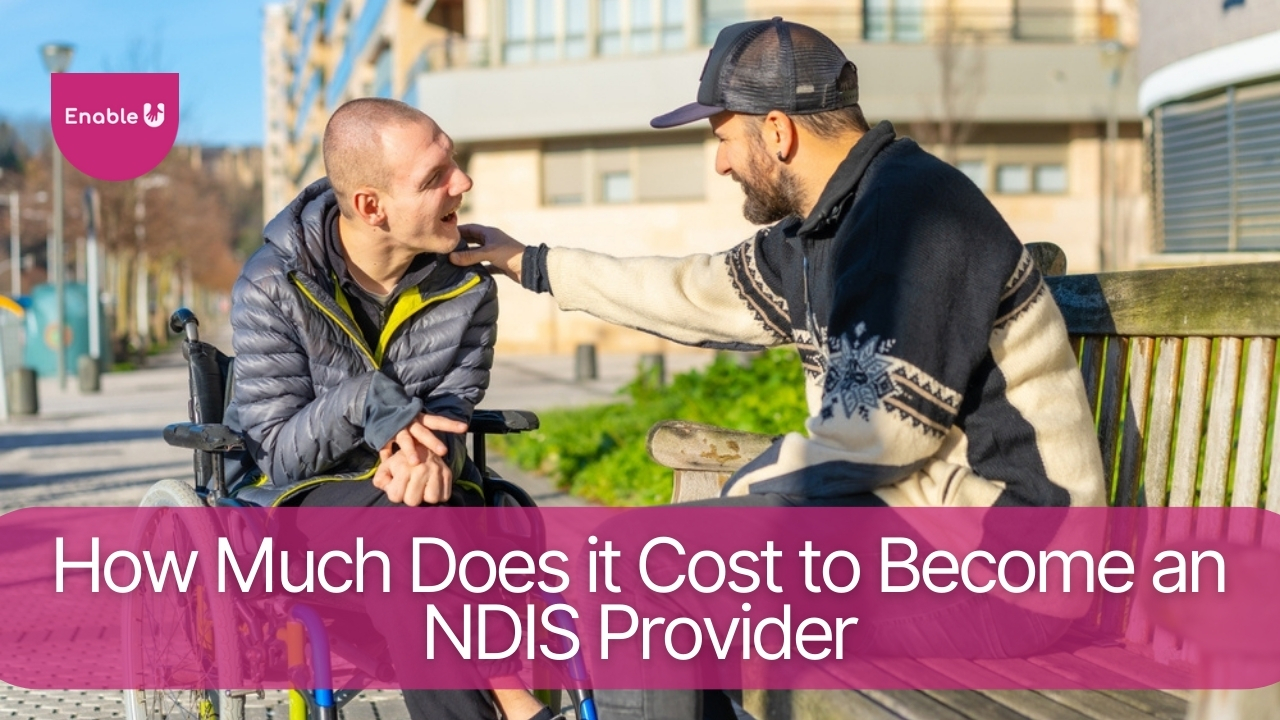Becoming an NDIS provider might seem like an easy thing to do from afar but it requires a ton of effort and money to do so. Potential providers wonder how much does it cost to become an NDIS provider and once they find out, some back out while some find the means to make it possible.
The National Disability Insurance Scheme also known as NDIS, is a disability program designed by the Australian government to help people with any significant disabilities lead independent lives. Participants can avail various services with the help of funds provided by the government and achieve their goals effectively. In this blog, we will tell you how much does it cost to become an NDIS provider and what are the essential things in the process so you can have better knowledge about the program before you step in on this journey.
Registration Process
Becoming an NDIS provider involves a thorough registration process set by the NDIS Commission. It’s not just about meeting standards; it’s about consistently going above and beyond.
Starting Your Online Application:
- Share detailed info about your business.
- Highlight the services you plan to provide.
- Assess your business using the NDIS Practice Standards.
Selecting Your Audit Team:
- Having an approved quality auditor is super important.
- They check how well you follow NDIS rules based on what you offer.
NDIS Commission’s Role:
- After you submit your audit and application, the NDIS Commission steps in.
- If everything checks out, you get a certificate showing your commitment and quality.
The Cost of Becoming an NDIS Provider
NDIS service providers have to invest a lot of money and time into becoming a care provider. It is an undeniable investment that one has to go through to achieve this goal. If we have to go through a detailed breakdown of the primary cost, it will be something like this:
The price of an External Quality Audit changes based on the services offered. A verification audit might cost between $700 and $1,000, while a certification audit could be around $2,500.
Insurance is a must-have, and its cost depends on the services provided, often being quite high.
Having well-trained staff meeting NDIS standards can cost about $500 for training and around $50 per state for police checks – a necessary investment.
Applying online is free, but there are expenses during the audit phase.
Additional costs like marketing, office space, and software tools can vary a lot.
How to Minimise Expenditure
Minimising expenditure can help you make the process much easier. If you wish to be the sole owner of the business, there can be much of a hassle when it comes to money. It takes a lot of knowledge and experience to know the tricks of minimising expense in this field. Following are some things you can do to ensure that the cost is kept in check.
Work together: Partner with other providers. This teamwork can mean sharing resources and spending less. As we said, owning a business entirely means that you will have to spend all the money alone, whereas if you have a partner, you can share this burden with them. The terms and conditions of all partnerships vary but it is better to be with someone if you are tight on the budget.
Focus on quality: Nothing should come above quality. No matter what you do, don’t compromise on the quality of your services. Invest in quality, not just quantity. It helps save money in the long run and builds a better reputation. It doesn’t matter if you have hundreds of support workers working under you if they can’t provide high-quality services. Your goal should be to make a good relationship with your clients and not to make money.
Use government help: Take advantage of government resources to cut costs a lot.
Smart Staffing: Hiring your staff is in your hands. You can prioritise anything you want. Ensure your staff are well-trained and efficient, reducing turnover costs and improving service quality.
Cost-effective Technology: There’s always more than one option. You don’t have to get expensive technology to be effective in your work. As a new service provider, you should focus more on saving the cost and one way of doing that is using cost-effective technology. Use cost-effective software and tools, optimising their use for better efficiency and reduced expenses.
Negotiate and Review Contracts: Negotiation is the key to reduced cost. Regularly review contracts with suppliers and negotiate better deals for supplies or services. If you are not good at it, try and become better because there can be many suppliers who charge more than they should and it is your job to identify those deals and negotiate with them.
Efficient Operations: Lastly, you should avoid any errors. Streamline your processes to reduce inefficiencies and unnecessary expenses. This can have a huge impact on your cost, because once you start being more efficient there won’t be any money you will have to spend on correcting the mistakes.
Conclusion
The path to becoming an NDIS provider is complex and challenging, but the rewards go far beyond money. The satisfaction of making positive changes in people’s lives makes every investment of time and money truly valuable. EnableU helps participants become the better versions of themselves and we have come this far by focusing on our goals and saving cost whenever we can.




